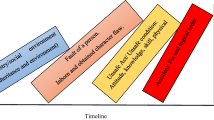Summary
Recent trends in the organization of work have raised concerns about their implications for safety and health in the workplace. Capacity for monitoring of these trends from an occupational safety and health perspective (also known as hazard surveillanceFootnote 1) varies considerably across countries and regions. This forum article discusses current practices for monitoring the organization of work, noting strengths, limitations, and needs for improvement. Particular attention is given to the status of monitoring practices in the U.S., and new initiatives by the National Institute for Occupational Safety and Health (NIOSH) to improve upon these practices.
Similar content being viewed by others
Notes
To be consistent with the convention in much of Europe, we have adopted the expression “monitoring” in relation to the collection and evaluation of data on trends in the organization of work. In the public health field in the U.S., the term “surveillance” is used as an analog to monitoring, referring to the systematic and ongoing collection of information on occupational injuries and illness (“health surveillance”) and hazards (“hazard surveillance”), and analysis, interpretation, and dissemination of this information for prevention purposes (NIOSH 2001).
Author information
Authors and Affiliations
Corresponding author
Rights and permissions
About this article
Cite this article
Sauter, S.L., Murphy, L.R. Monitoring the changing organization of work: international practices and new developments in the United States. Soz.-Präventivmed. 48, 341–348 (2003). https://doi.org/10.1007/s00038-003-3026-2
Issue Date:
DOI: https://doi.org/10.1007/s00038-003-3026-2




